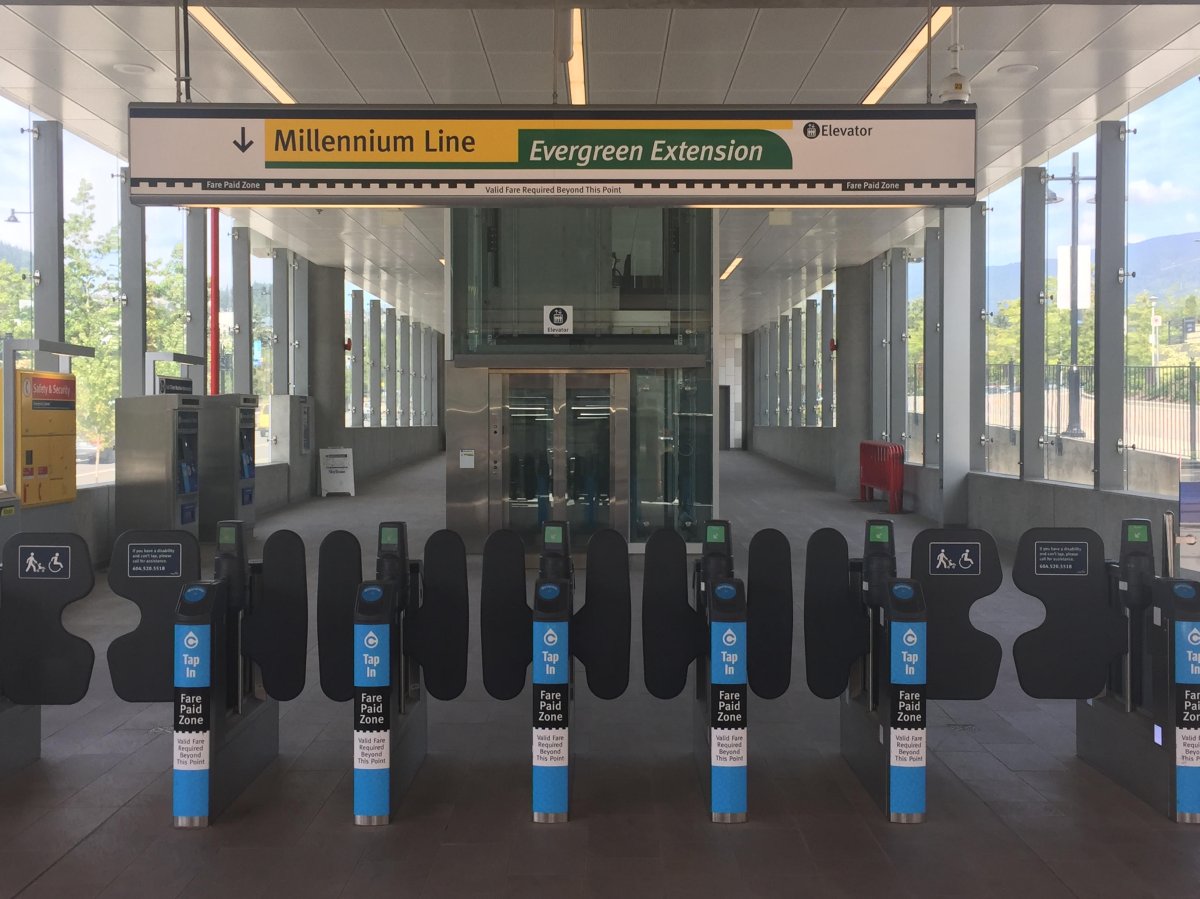The CKNW and Global News Neighbourhood Series is an annual series that explores neighbourhoods in Vancouver, Surrey, and the Tri-Cities.

As part of this year’s series, Chris Brentlinger-Grant takes a look at how Coquitlam is changing.
Has the Evergreen Line brought inner-city convenience or inner-city challenges?
Launched in December 2016, the Evergreen Line sees now about 30,000 daily boardings, according to TransLink.
For someone like Duncan Crawford, it provides him with an easier route to get from his home in Downtown Vancouver to his place of work in Coquitlam.
“It’s a game changer. If you want to go from down here, from Burrard station, all the way up to Lafarge Lake — which is the entirety of the line — it takes about an hour.”
And despite what some may think, Coquitlam RCMP says early numbers show no evidence to support a rise in crime due to the convenience of the SkyTrain.
Mayor Richard Stewart echoed those sentiments, saying the only real complaint is the noise.
“Rapid transit has the potential for introducing negatives and we haven’t really seen it,” said Stewart.
“We’ve been monitoring it very closely and we had long discussions with the RCMP, with Transit Police, prior to the arrival of the SkyTrain because we wanted to do it right and wanted to make certain that some of the negative impacts that sometimes get attributed to transit didn’t come here.”
But what about the people that work and live in the city, do they feel safe in the community now that the Evergreen Line is up and running?
“There was a lot of talk of crime increasing specifically in the Lafarge Lake area before the SkyTrain started, and it was, I think, it was a little blown out of proportion,” said Crawford.
WATCH: Evergreen Line finally opens for transit users in the Lower Mainland

“I wouldn’t say that crime has necessarily increased. I think that the visibility of populations that probably weren’t out there before may be present, but I think that comes along with bringing transportation anyway.”
For some Coquitlam residents, one of the best qualities of the city was its small-town feel, which Crawford said has changed.
“My dad lives up like 10 blocks away from the Lafarge Lake SkyTrain and he’s saying he doesn’t want to live there anymore. Like he’s kind of at the point where there’s too much traffic in that area.”
Stewart said this is a challenge that every urban centre faces to some degree.
“We’re really relying on SkyTrain to make certain that we can densify certain pockets and maintain the livability of the rest of the region as much as possible while absorbing essentially one third of the current population over a couple, two or three decades.”
For resident Jeff Alexander, this is a change that he’s really enjoying
“I just think Coquitlam can expand and it could become a bit more of a lively area.”
But he adds this growth can happen without necessarily all of a sudden having 15 new high-rises in the area.
If you head a kilometre or two away from the line to Austin Heights, you won’t even notice a change said Lisa Landry, Executive Director with the Austin Heights Business Improvement Association.
“Well, actually I’ve spoken to a number of the business owners and they, for the most part, say that there’s been little to no impact in the area from the Evergreen Line,” said Landry.
Stewart said that now that the line is built, the city is going to start adapting to its new identity.
“Rapid transit stations are a key focal point where those frequent transit areas, where we can put a lot of density, reduce parking and perhaps foster a different environment where we’re not relying as much on the automobile as a region.”





Comments